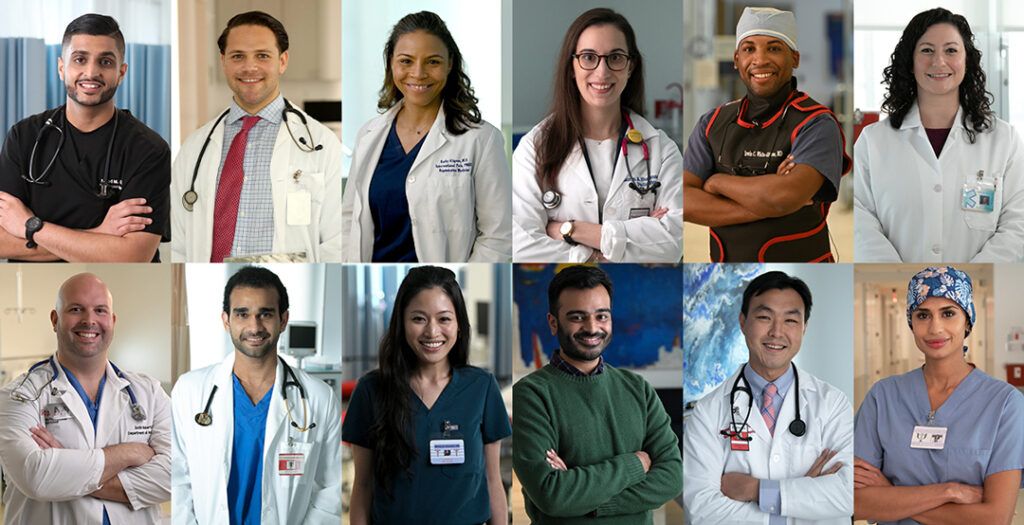The preparation to become a physician can seem like one long checklist of things you need to accomplish: get accepted into medical school, land a residency, obtain licensure, and then begin practicing. And, as you know, each of those steps unfolds into its own smaller checklist of steps you’ll need to complete.
One of the most important among them is clinical rotations. This is when you’ll really be able to put your knowledge into practice and explore different medical specialties that interest you. But you may still be wondering, “What are clinical rotations in medical school?” Read on to learn more about what you can expect.
Why are clinical rotations important?
Medical students typically complete their clinical rotations—also called clerkships—during the third and fourth years of their Doctor of Medicine (MD) programs. Participating in clinical rotations gives soon-to-be physicians critical firsthand experience in working with patients under the direct supervision of a faculty member, fellow, or resident.
While the first couple of years in medical school are spent building the foundational knowledge you’ll need to practice medicine, your clinical rotations will be your opportunity to pair that extensive knowledge with hands-on skills in the form of direct patient care. Being able to practice and eventually master those skills under the supervision of seasoned professionals is an invaluable experience for future physicians.
What to expect from clinical rotations in medical school
The specifics of each experience will vary from program to program, but training is typically completed in a variety of different areas, such as internal medicine, family medicine, obstetrics and gynecology, pediatrics, psychiatry, and surgery. In most cases, clinical rotations are broken down into four-, six-, or twelve-week blocks, enabling students to experience a variety of different specialty areas from one rotation cycle to the next.
These clinicals often include outpatient experiences, such as short visits in which you’ll take a patient’s history and perform physical exams. You can also expect inpatient rotations that will involve more extended patient interaction, often caring for the same patients in days-long cycles.
St. George’s University (SGU) intentionally structures fourth year medical school clinical rotations to be made up of four-week sessions that allow students time to fit in residency interviews and electives as desired. Providing exposure to several areas of practice encourages you to explore your medical interests and begin determining what your focus will be as a physician. Note that it’s helpful to keep an open mind during clinicals—even if you’re confident in the type of doctor you want to be, that may change once you experience the field firsthand.
When completing your clinical rotations, it’s important to be patient and trust the process. No one becomes an expert at working with patients overnight. This is the time to increase your clinical exposure so you can build and eventually solidify the skills and confidence you’ll need to practice.
Experience clinical rotations at St. George’s University
So what are clinical rotations in medical school? They are among the most critical phases of training for physicians. This is when you’ll put everything you learned in the first two years of medical school into practice with supervised direct patient care.
At St. George’s University (SGU), medical students have the added benefit of being able to complete their clinicals at several different sites if they’re looking to experience more variety. In fact, there are 70 sites to choose from throughout the US and the UK.
Learn more about what you can expect from clinical rotations at SGU by reviewing our article, “Answering 8 Common Questions About SGU Clinical Rotations.”


